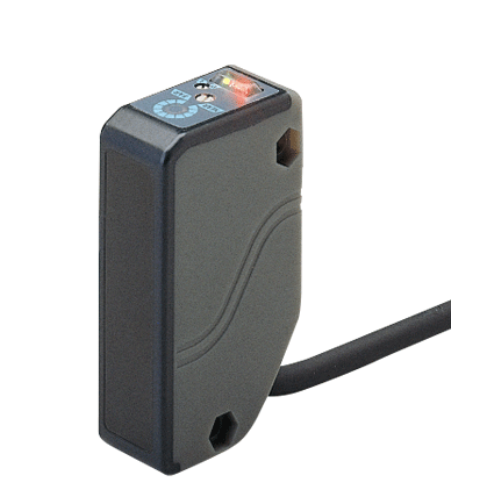Panasonic EQ-34 Sensor – Advanced Technology for Industrial Applications
The EQ-34 sensor is a state-of-the-art industrial sensor designed to meet the demands of modern automation and manufacturing processes. With its advanced reflective technology, long detection range, and exceptional durability, the EQ-34 sensor delivers unmatched reliability and precision in challenging industrial environments.
Panasonic EQ-34 Sensor Specifications
The EQ-34 sensor is equipped with cutting-edge features to enhance performance:
- Detection Range: Supports long-range sensing for comprehensive industrial coverage.
- Reflective Technology: Delivers accurate performance even on reflective surfaces.
- Sensitivity Adjustment: Allows customization for various industrial tasks.
- Power Requirements: Operates efficiently with a 12-24V DC power supply.
- Durable Design: Built to withstand dust, vibration, and extreme temperatures.
These specifications make the EQ-34 sensor a reliable and versatile choice for diverse industrial needs.
Industrial Applications of the EQ-34 Sensor
The EQ-34 sensor is widely used across multiple industries:
- Automation Systems: Ensures accuracy in automated assembly lines and robotic systems.
- Factory Operations: Provides dependable performance in harsh conditions.
- Heavy-Duty Applications: Ideal for large-scale manufacturing and material handling.
- Reflective Surface Detection: Handles reflective materials with precision and consistency.
Its adaptability makes the EQ-34 sensor a valuable asset for improving productivity and operational efficiency.
Panasonic EQ-34 Installation Guide
Installing the Panasonic EQ-34 sensor is straightforward. Follow these steps for seamless integration:
- Positioning: Place the sensor at an optimal angle for the target area.
- Power Connection: Connect to a 12-24V DC power source.
- Adjust Sensitivity: Use the built-in controls to fine-tune the sensitivity for your application.
- Test Performance: Verify proper functioning by testing the detection range and output signals.
Following these steps ensures reliable and efficient sensor operation.
Downloading the EQ-34 Datasheet
The Panasonic EQ-34 datasheet provides in-depth technical information, including:
- Wiring diagrams and installation instructions
- Detailed specifications for detection and sensitivity
- Durability and operational guidelines
- Maintenance and troubleshooting tips
Download the datasheet to unlock the full potential of the EQ-34 sensor.
Advantages of the EQ-34 Sensor
The Panasonic EQ-34 sensor offers numerous benefits for industrial users:
- High Performance: Provides consistent and accurate detection.
- Reliability: Built to perform under demanding conditions.
- Ease of Integration: Compatible with most industrial systems.
- Durability: Engineered to withstand tough industrial environments.
These advantages make the Panasonic EQ-34 sensor a top choice for businesses seeking dependable industrial solutions.
Frequently Asked Questions
1. What is the detection range of the EQ-34 sensor?
The EQ-34 sensor supports long-range detection, making it suitable for large-scale industrial applications.
2. Can the EQ-34 sensor handle reflective surfaces?
Yes, the sensor is designed with advanced reflective technology to ensure accuracy on reflective materials.
3. How do I adjust the sensitivity of the EQ-34 sensor?
The EQ-34 sensor features easy-to-use controls for precise sensitivity adjustments.
4. Where can I purchase the EQ-34 sensor?
The EQ-34 sensor is available online through authorized distributors and retailers.
5. What are the power requirements for the EQ-34 sensor?
The sensor operates on a 12-24V DC power supply, ensuring energy efficiency.
Conclusion
The Panasonic EQ-34 sensor combines innovative technology with robust construction to meet the needs of industrial users. Its high performance, reliability, and versatility make it an essential tool for enhancing productivity and efficiency in industrial applications. Invest in the EQ-34 sensor today to optimize your operations.
Related Articles: Learn more about the sensors by reading our blog on What is a Photoelectric Sensor?

